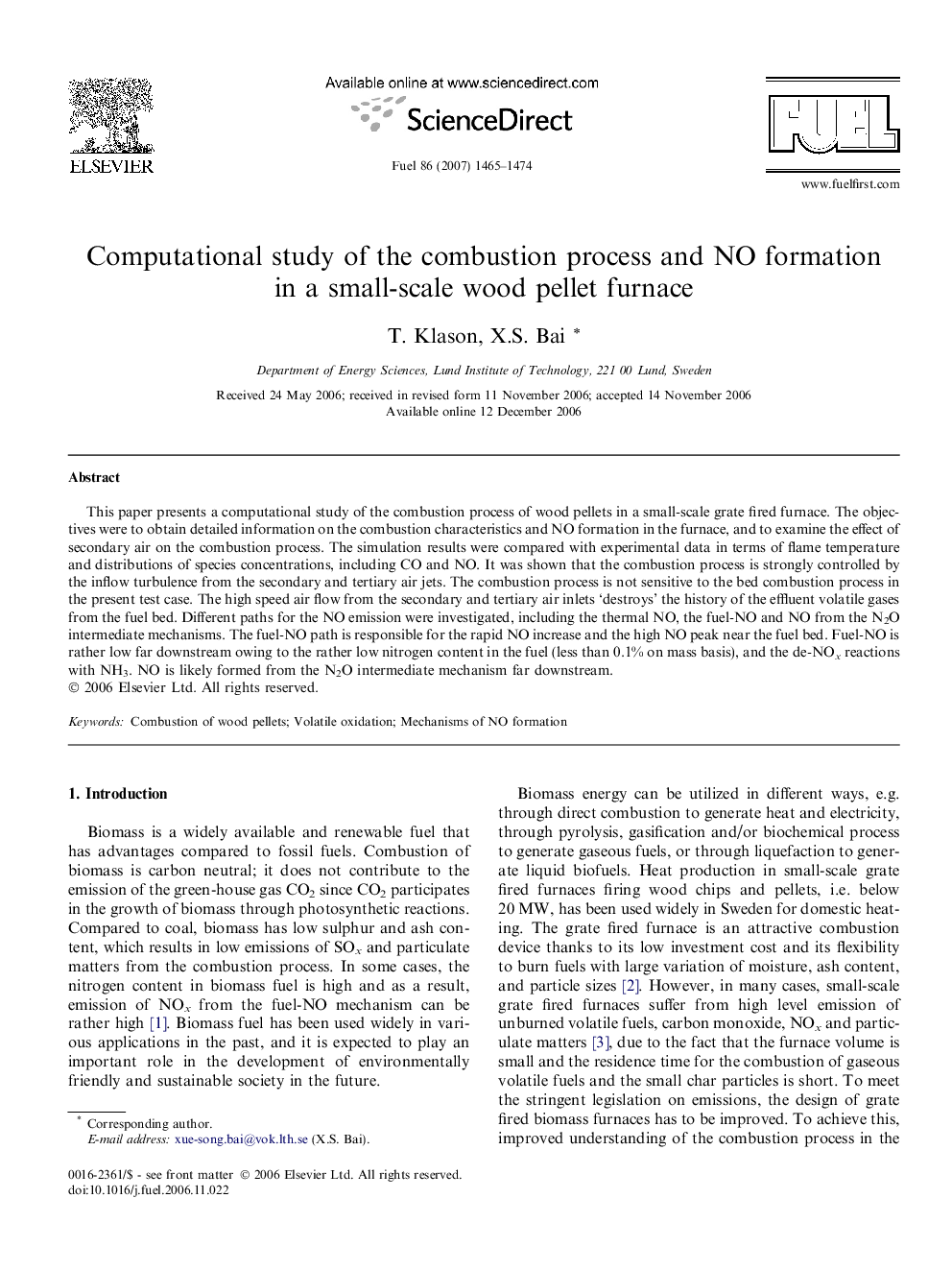| Article ID | Journal | Published Year | Pages | File Type |
|---|---|---|---|---|
| 207797 | Fuel | 2007 | 10 Pages |
This paper presents a computational study of the combustion process of wood pellets in a small-scale grate fired furnace. The objectives were to obtain detailed information on the combustion characteristics and NO formation in the furnace, and to examine the effect of secondary air on the combustion process. The simulation results were compared with experimental data in terms of flame temperature and distributions of species concentrations, including CO and NO. It was shown that the combustion process is strongly controlled by the inflow turbulence from the secondary and tertiary air jets. The combustion process is not sensitive to the bed combustion process in the present test case. The high speed air flow from the secondary and tertiary air inlets ‘destroys’ the history of the effluent volatile gases from the fuel bed. Different paths for the NO emission were investigated, including the thermal NO, the fuel-NO and NO from the N2O intermediate mechanisms. The fuel-NO path is responsible for the rapid NO increase and the high NO peak near the fuel bed. Fuel-NO is rather low far downstream owing to the rather low nitrogen content in the fuel (less than 0.1% on mass basis), and the de-NOx reactions with NH3. NO is likely formed from the N2O intermediate mechanism far downstream.
